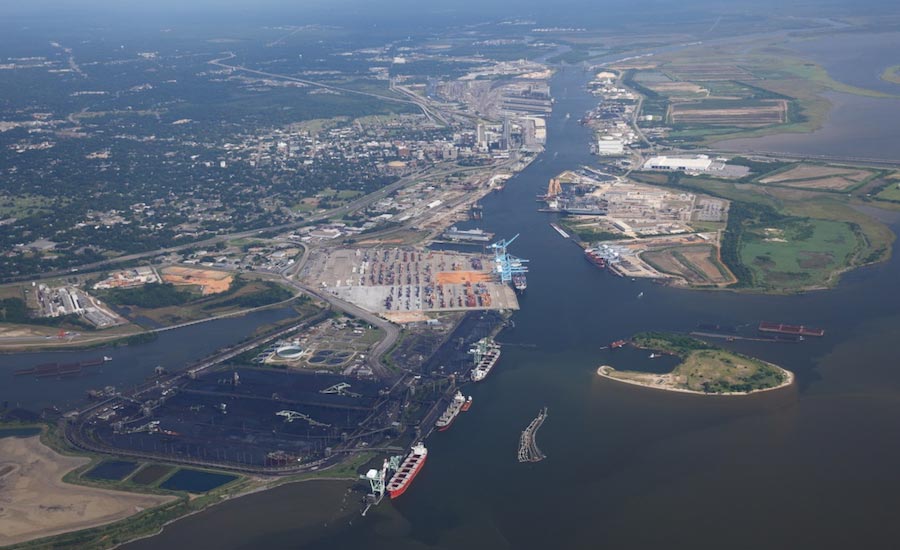The Army Corps of Engineers has laid out its plan for how it will spend $2.8 billion in fiscal year 2020 appropriations for which Congress didn’t specify uses.
A highlight of the Work Plan, sent to Congress on Feb. 10, is funding to launch a new dredging demonstration program that could result in combining multiple projects, tapping multiple years’ worth of funding and drawing on more than one Corps budget account.
Construction and transportation group officials smiled when a 2020 federal spending package signed into law on Dec. 20 included $7.65 billion overall for the Army Corps of Engineers civil works program, a 9% boost over 2019.
Of that total, Congress specified how to divide about $4.5 billion among certain “programs, projects and activities.” Now the Corps has followed up with its work plan, which lists project-by-project allocations for the other $2.7 billion. (View summary here.)
A new wrinkle is $377.7 million of the work plan's $1.5 billion construction allotment to initiate the regional dredging program, which will focus on the central Gulf Coast area. (View project-by-project, state-by-state breakdown of work plan's construction section here.)
Program's aims: save costs, gain efficiencies
In a statement accompanying the 2020 spending measure, appropriators said that the new dredge program “will explore innovative ways of executing dredging in a logical, sequenced manner, unconstrained by more traditional, [Corps] project-specific, account-specific or single-year practices.”
Instead, the lawmakers added, the pilot program will “seek efficiencies and cost savings by evaluating the region as a system” to see where it makes sense to combine several dredging projects over a period of years or at least a couple of separate Corps budget accounts. [View October 2019 ENR story on the dredging program here.)
The work plan includes federal funding for three projects in the new dredging program: $274.3 million for Mobile harbor in Alabama; $85.4 million for the Mississippi River Ship Channel in Louisiana, from the Gulf to Baton Rouge; and containment dikes in Calcasieu River and Pass, also in Louisiana.
Senate Appropriations Committee Chairman Richard Shelby (R-Ala.), in a statement, hailed the allocation for Mobile as “a historic moment and victory for Mobile and the entire state of Alabama.” He said the state will supplement the federal dollars with its own funds.
The project will deepen channels by 5 feet, to 50 ft.
Dredge contractors, ports praise new program
Industry groups also welcomed the new program. William P. Doyle, Dredging Contractors of America chief executive officer, said via email, “The U.S. dredging industry is coordinating as we speak with the U.S. Army Corps of Engineers on the path forward—we’re ready to make this program a success.”
Doyle said that besides the $377.7 million in the construction section of the work plan, the dredging program also could draw on substantial other sums in the plan’s operations and maintenance category for the Mobile, Calcasieu and the Baton Rouge-Gulf areas.
Doyle praised the House and Senate “for thinking outside the box and finding creative solutions to address the nation’s harbor and waterway system.”
Jim Walker, American Association of Port Authorities director of navigation policy and legislation, said in an email, “The expectations are that with sufficient funding for a multi-year effort, this will result in better bid prices and faster work completion.”
Walker added that the Corps “is convening a special team of navigation experts to develop the plans and specifications, working with industry, something along the lines of “Early Contractor involvement.” Walker said, “I look forward to seeing the results.”
Spreading the wealth
The work plan has good news for many other projects around the country, too. The $1.5-billion construction account portion includes funds to start six new projects plus money to continue projects that have been underway, sometimes for years.
The new navigation-related project starts are Freeport, Texas, harbor channel dredging and Port Everglades, Fla., harbor dredging.
Flood-protection new starts are San Joaquin River Basin, Calif.; and Waterbury Dam rehabilitation in Vermont.
Ecosystem restoration projects are in Dry Creek/Warm Springs in California and South Florida.
Mike Toohey, Waterways Council Inc. (WCI) president and CEO, said in a statement that the allotments in the work plan for inland waterways projects “are a big win for our stakeholders.”
The council cited $63 million to complete Olmsted Lock on the Ohio River in Kentucky and Illinois; $61 million for Kentucky Lock, also on the Ohio, but in western Kentucky; $111 million for three locks on the Lower Monongahela in western Pennsylvania; and $102 million for Chickamauga Lock on the Tennessee River.
The waterways council also was happy to see $4.5 million for preconstruction engineering and design for the Navigation and Ecosystem Sustainability Program—a combination of river lock improvements and environmental restoration on the Upper Mississippi River-Illinois Waterway System. The engineering funding is the program’s first such allocation since 2012, WCI notes.
But on a related matter, Toohey said the council was "absolutely astonished" that President Trump's budget request for the next fiscal year, 2021, had almost no funds for inland waterway projects. The budget's total funding for the Olmsted, Kentucky, Lower "Mon" and Chickamauga locks was zero.




